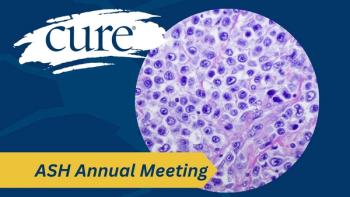
Warning: Breast Cancer May Cause Color Blindness
The pink and blue conundrum makes its October reappearance once again.
Let me begin by asserting, as I have every October for the last five years, that I fully support women and the quest to eradicate breast cancer from the face of the Earth. After all, I have breast cancer too. If the October pink-a-thons were only about that, I don't believe there would be much controversy about rallying support for the feminine festivities that dominate the month.
But it doesn't take a lot of looking to see the commercialization that has gripped the movement in a flurry of product labeling that smears the color pink on endless forms of merchandise, services and industries in order to create a semblance of virtue and compassion.
And in the process of jumping on the bandwagon of goodness, the profiteers run the risk of diluting the meaning and the integrity of all who have breast cancer. I don't believe we can stop the mighty wheels of marketing in any meaningful way, but my hope is that by focusing on the disease of breast cancer as a genderless, colorless disease, we can raise significant dollars for research without the pageantry and product pushing.
Speaking of pageantry, here are two examples of bizarre "pinkonomics":
In 2010 the Komen organization partnered with fast food chain KFC on a national campaign to raise money and awareness by selling pink-branded buckets of fried and grilled chicken. It's true that this campaign raised a whopping $4.2 million, but medical experts denounced the two organizations for encouraging people to purchase unhealthy food that can lead to weight gain or obesity which,
The list of "pink for profit" companies is a long one. The gun maker Smith & Wesson released a handgun with a pink grip and an engraved pink ribbon along with a declaration that "a portion of the proceeds from each pistol sold will go to a breast cancer awareness charity." It was unclear how the money would be donated or to which organization it would go.
Aside from bizarre promotions, there is another dire consequence to the October madness: Lost in this sea of pinkness are the men with breast cancer.
It continues to be a struggle to bring male breast cancer into the public eye and to educate men to understand that, because they have breasts, they can indeed get breast cancer; and to include men in the countless clinical trials that are in process at any given time. There is a good deal of momentum to add a dash of "blue to the pink" and to remind people that men have breasts too, but I wonder if our goal should be to diminish the voice and the volume of pink, to crank up the presence and prominence of blue or just wash away the colorblind population on both sides of the palette?
I see colorblindness as the best option.
After all, we are targeting breast cancer; not pitting women against men. Sure, male breast cancer represents just 1% of all breast cancers, but with more than
As we roll out the pink carpet this month for our sisters with cancer, it's my hope that we can find a way to become color coordinated and work together to eliminate breast cancer from our lives. And any way you color it, that's a goal as good as gold.





